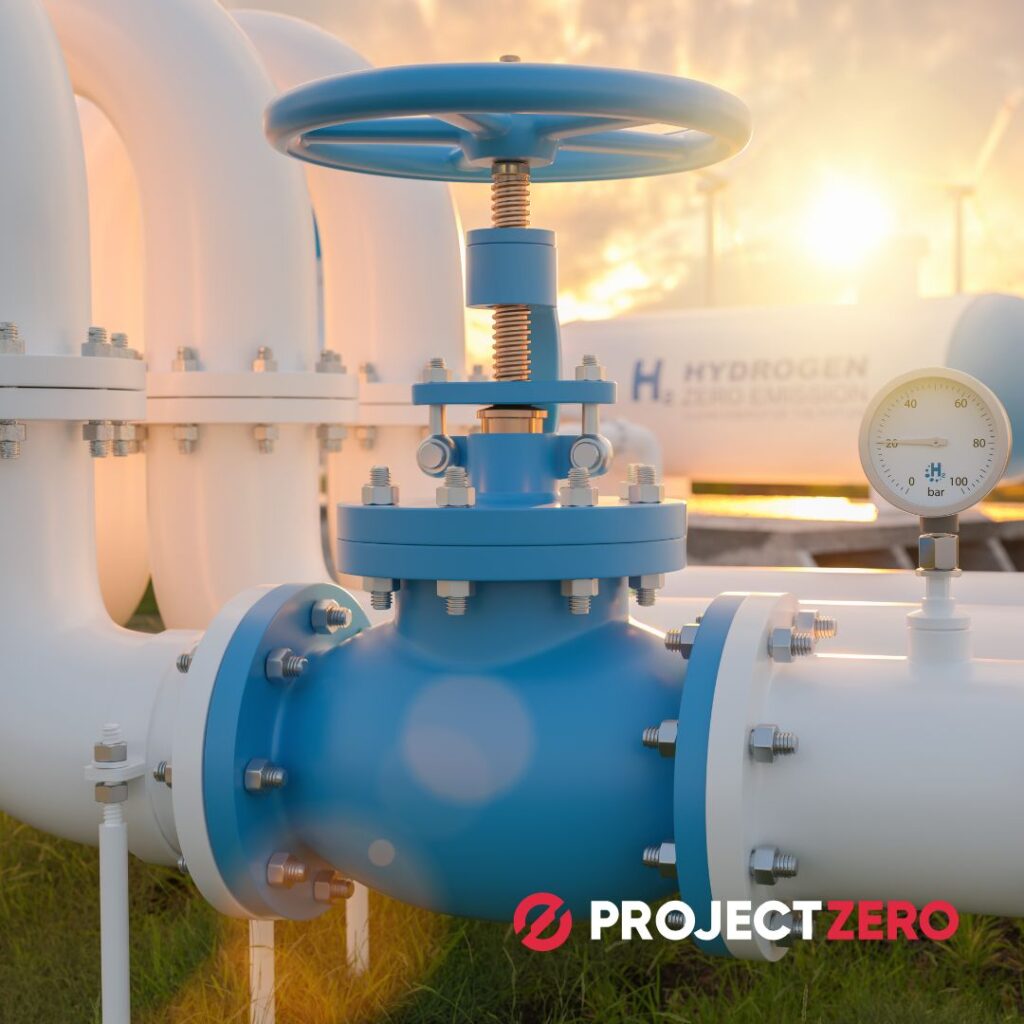
Here’s How to Stay Safe and On Track
Hydrogen is a key enabler of the energy transition, but it brings unique technical challenges: it’s ultra-light, highly diffusive, and can weaken materials over time. That’s why the International Organization for Standardization (ISO) has released a major update to ISO 19880-1, coming into effect in 2025.
Two new requirements in particular will impact design, procurement, and commissioning right away:
- Valves rated above 100 bar must now meet a minimum strength factor of 1.35
- Gaskets exposed to open air must achieve Leak Tightness Class A+
At first glance, these may seem like minor technical changes. In reality, they affect lead times, costs, and safety margins. The good news? ProjectZero already supports oil & gas and hydrogen pilot projects with audits, training, and digital tools—so you can act now without scrambling later.
Why the Strength Factor Increases from 1.25 to 1.35
Lab tests in 2023 showed that valves originally certified for methane failed prematurely when exposed to high-pressure hydrogen.
The solution involves using thicker walls or stronger alloys—but this shifts many valves (such as DN50 Class 600) from catalogue items to special orders, often doubling delivery times.
Why Gaskets Must Comply with Class A+
Unlike methane, hydrogen can escape as an invisible gas cloud.
For this reason, the new standard limits leakage to 10⁻⁴ mbar·L/s for exposed gaskets.
Above 50 bar, metal-to-metal seals and spring-energized rings become the new baseline—already widely used in high-integrity environments.
Retrofit or Rebuild? Assessing Existing Lines
Many legacy pipelines built for natural gas now face a fork in the road:
- Lines older than 20 years and operating above 100 bar often require full replacement
- Mid-pressure lines with strong hydrotest records may only need upgrades to gaskets and soft parts
Every case requires a tailored assessment—but acting before the 2025 deadline is key.
How to Run a Gap Analysis Without Drowning in Excel
A practical first step is to update your valve inventory by adding four new columns:
- Design pressure
- Current strength factor
- Current leak class
- ISO 2025 compliant?
This simple addition allows you to quickly pinpoint critical issues and prioritize upgrades.
Testing and Commissioning: What Changes in Practice
Testing requirements are getting tighter. New standards call for helium sniffers sensitive to 1 × 10⁻⁶ atm-cc/s.
High-pressure skids may also require a second round of testing.
Technicians must calibrate the equipment, document results, and upload everything to the cloud dashboard already in use by ProjectZero’s digital transformation programs.
The result: real-time traceability, ready for inspections.
Budget and Timeline Considerations
Upgrading to meet the new standards carries a cost—but it’s manageable:
- CAPEX for high-pressure sections may increase by 5–7%, mainly due to upgraded valves and seals
- Lead times may extend by about four weeks, but active expediting helps anticipate and prevent delays
Early pilot plants are already seeing benefits: 40% fewer unplanned hydrogen leaks, with ROI in around two years.
What Comes After 2025?
ISO has already hinted at new 2027 updates, including:
- In-line hydrogen purity sensors
- Modular, swappable filter pods
Firms that invest today in digital project data management (such as digital twins) will be ready to implement future changes with just a click—instead of rushing to adapt under pressure.
In Summary: What You Should Do Now
- Upgrade valve strength to meet the 1.35 factor
- Use Class A+ gaskets for all exposed connections
- Map compliance with a simple updated spreadsheet
- Train technicians for the new testing protocols
- Track everything with cloud-based tools
By acting now, the 2025 ISO 19880-1 revision becomes a manageable improvement—not a costly last-minute scramble.
